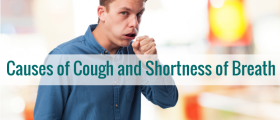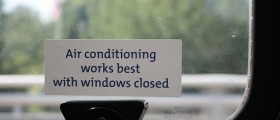Loading...
Loading...
Page issues
"Laryngospasms" redirects here. For the parody group, see The Laryngospasms.
In medicine, laryngospasm is an uncontrolled/involuntary muscular contraction (spasm) of the vocal folds.[1] The condition typically lasts less than 60 seconds, but in some cases can last 20-30 minutes and causes a partial blocking of breathing in, while breathing out remains easier. It may be triggered when the vocal cords or the area of the trachea below the vocal folds detects the entry of water, mucus, blood, or other substance. It is characterized by stridor and/or retractions.[1][clarification needed] Some people suffer from frequent laryngospasms, whether awake or asleep. In an ear, nose, and throat practice, it is typically seen in people who have silent reflux disease. It is also a well known, infrequent, but serious perioperative complication.[2]
Laryngospasm
Classification and external resources
Specialty pulmonology
ICD-10 J38.5
ICD-9-CM 478.75
MeSH D007826
[edit on Wikidata]
It is likely that more than 10% of drownings involve laryngospasm, but the evidence suggests that it is not usually effective at preventing water from entering the trachea.[3]
Causes
Symptoms
Treatment
Prevention
See also
References
External links
Last edited 26 days ago by an anonymous user
RELATED ARTICLES
Cough
medical symptom, reflex to clear large breathing passages
Respiratory tract
the part of the anatomy involved with the process of respiration
Vocal cord dysfunction
Wikipedia
Content is available under CC BY-SA 3.0 unless otherwise noted.
Terms of UsePrivacyDesktop
Loading...
Loading...
Loading...
Loading...
Loading...
Mucus is produced by the small mucous-producing cells and glands that line the respiratory tract. These cells also line the digestive tract. When it comes to the airways the mucus moisturizes the lining which quickly dries due to the constant movement of air. It also traps dust and microbes. Tiny hair-like protrusions then push the mucus up and out of the airways into the mouth where it is spat out or swallowed. Some mucus may also drip out of the nose. Normally we do not realize that this mucus production, expulsion and swallowing is occurring.
When the mucus is excessive we may experience is as a runny nose, post-nasal drip or productive cough. Frequent swallowing is another way that the body may attempt to clear the air passages of the mucus. Sometimes the mucus does not arise from the respiratory tract. The lining of the digestive system can also produce mucus. In fact the mouth and even salivary glands also release mucus into the oral cavity. Excessive mucus arises when the saliva-producing cells or glands are overstimulated. This is most often related to inflammation.
Loading...
I have had several of these episodes, always at night/evening, usually during sleeping. The last two resulted in bladder control loss. Very scary to be completely unable to breathe, but always quickly resolved (although it doesn't feel quick when you're in the middle of it). I've had some luck with walking quickly to the door and stepping outside. Not so much luck with holding my tongue to the roof of my mouth. Breathing in through the nose has worked for me a couple of times but usually I haven't been able to breathe either through nose or mouth.
Some sites suggest tilting the head back to enable taking a slow breath in through the nose, followed by a quick breath out of the mouth. I plan to try this during my next episode.
***this post is edited by moderator *** *** web addresses not allowed*** Please read our Terms of Use
Loading...
Loading...
Loading...
I just had an attack right now, and found this video from an earlier post on this site. I'm going to try this next time - search for a video Laryngospasm straw beathing by Dr Robert Bastian, it makes sense. It's counter-intuitive, as when the attacks happens, all you want to do is get as much air as you can, but the trick seems to be to trickle that air in, instead of large forceful gulps.
Loading...
Loading...
Loading...




-And-Breathing-Problems_f_280x120.jpg)












